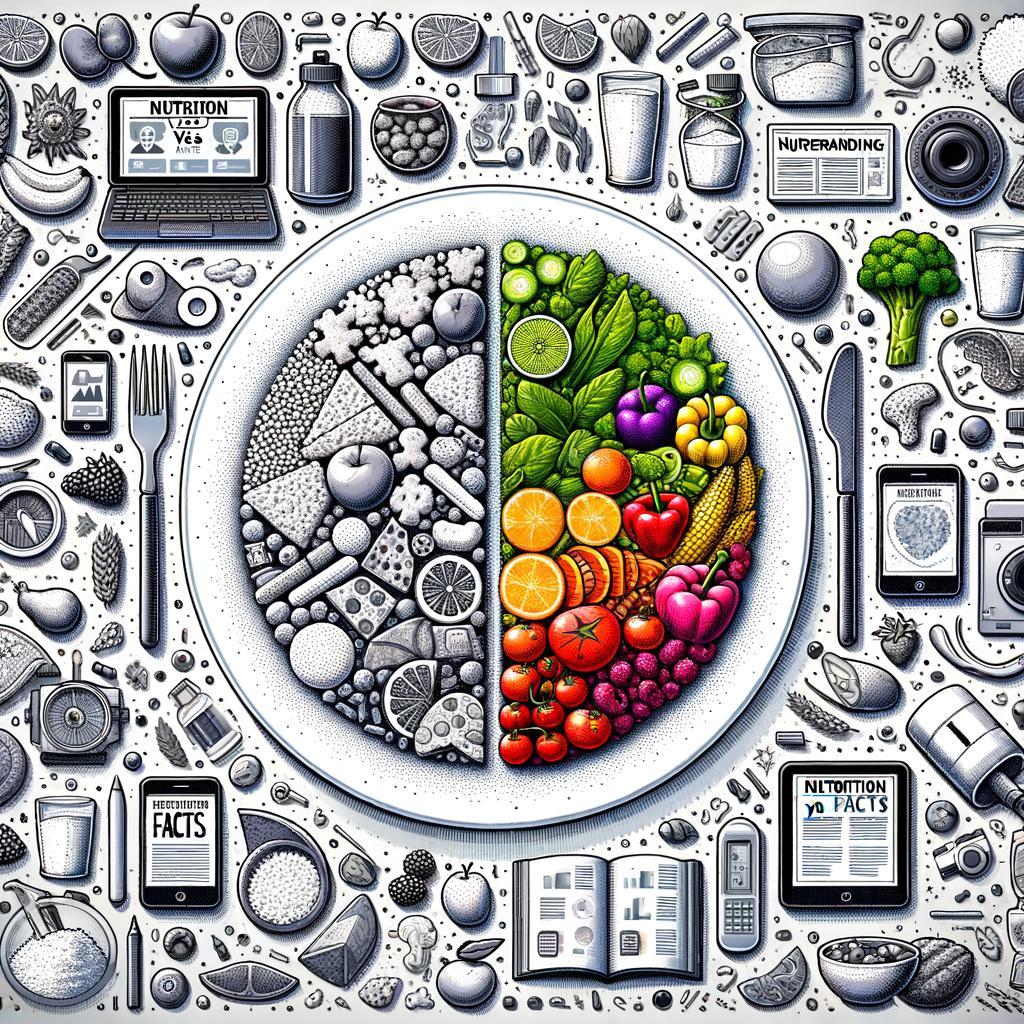“Nutrition Myths vs. Facts: Understanding What You Eat”
In a world overflowing with information, the landscape of nutrition often feels like a labyrinth, where myths and facts intertwine, creating a complex tapestry of dietary advice. From social media influencers touting the latest superfood to long-standing beliefs passed down through generations, deciphering what we should eat—and what we should avoid—can be a daunting task. In this article, we embark on a journey to unravel the truths behind common nutritional misconceptions. By delving into science-backed evidence and expert opinions, we aim to illuminate the path to informed choices, helping you to distinguish between the enticing allure of dietary fads and the foundational knowledge of wholesome eating. Join us as we navigate the sometimes murky waters of nutrition, equipping you with the insights necessary to nourish your body and mind wisely.
Debunking Common Nutrition Myths for Better Choices
Nutrition misinformation can lead to confusion and unhealthy choices. One prevalent myth is that all fats are harmful. In reality, healthy fats, such as those found in avocados, nuts, and olive oil, are essential for bodily functions. They provide energy, aid in nutrient absorption, and promote brain health. Instead of avoiding fats entirely, it’s crucial to differentiate between healthy and unhealthy fats. Focus on incorporating beneficial fats into your diet while limiting trans fats found in processed foods.
Another common misconception is that carbohydrates should be completely eliminated for weight loss. In contrast, whole grains, fruits, and vegetables are vital sources of energy and nutrients. Rather than cutting out carbs, the key is to choose the right types. Opt for complex carbohydrates, which are rich in fiber and will keep you satiated longer. A balanced approach that includes carbohydrates, along with proteins and fats, supports overall health and can aid in achieving weight management goals.
Nutrient Timing: The Reality Behind Meal Frequency
Nutrient timing is often heralded as a cornerstone of effective meal strategies, yet its reality is considerably nuanced. While there’s a belief that consuming meals at specific intervals can enhance metabolic performance or muscle gain, recent evidence suggests that the overall quality and quantity of nutrients consumed play a far more critical role. What matters more is not how often you eat, but rather how you structure your overall dietary pattern. Here are some key points to consider:
- Individual preferences matter: Each person’s lifestyle and schedule should dictate meal frequency, whether it’s three large meals a day or multiple small snacks.
- Protein intake timing: While regular protein consumption is beneficial for muscle synthesis, it can be effective when spread throughout the day, rather than consumed in strict intervals.
- Caloric balance is key: Focusing solely on when to eat can overshadow more important factors like total caloric intake and nutrient quality.
To further clarify the misconceptions surrounding meal frequency, consider this simplified comparison of different eating patterns and their perceived benefits:
| Eating Pattern | Perceived Benefits | Reality |
|---|---|---|
| Frequent Small Meals | Boosts metabolism | Metabolic rates are generally similar regardless of meal frequency. |
| Intermittent Fasting | Enhances fat loss | Effective for some; individual results vary based on adherence and total intake. |
| Three Large Meals | Promotes fullness | Quality of food and calorie control remain paramount for health. |
Superfoods 101: Separating Hype from Health Benefits
In a world inundated with wellness trends, certain foods often emerge as the flag bearers of health, touted for their miraculous benefits. However, it is crucial to sift through the noise and understand the true power of these so-called superfoods. While they may be loaded with vitamins, minerals, and antioxidants, the idea that they can single-handedly cure ailments or drastically improve health is misleading. Instead, these foods should be viewed as part of a broader, balanced diet, rather than miraculous solutions. Examples of popular superfoods include:
- Acai Berries: Rich in antioxidants, but not a substitute for regular fruit intake.
- Quinoa: A complete protein source that complements various diets, though its benefits are similar to other whole grains.
- Kale: Nutrient-dense but should be enjoyed alongside a variety of vegetables.
When assessing the health benefits of superfoods, it’s essential to understand their contributions in context. A diverse approach to nutrition, incorporating various food groups, will yield more substantial health improvements than focusing on a single ingredient. Scientific evidence often indicates that while these foods can enhance well-being, their effects are maximized when included in an overall healthy lifestyle. The table below outlines some common superfoods alongside their relevant health benefits:
| Superfood | Key Benefits |
|---|---|
| Chia Seeds | High in omega-3 fatty acids and fiber. |
| Turmeric | Powerful anti-inflammatory properties. |
| Salmon | Excellent source of protein and heart-healthy fats. |
Understanding Labels: Navigating Nutrition Information with Confidence
Navigating the world of nutrition labels can be overwhelming, but understanding their components is key to making informed dietary choices. Each label is a window into what you’re consuming, providing essential information about serving sizes, calorie counts, and nutrient break-downs. Becoming familiar with terms like calories, fats, carbohydrates, and proteins can help demystify the contents of your food. Furthermore, look out for added sugar and sodium levels, as these are crucial indicators of health that can impact your overall diet.
To fully grasp what you’re eating, consider these core elements of nutrition labels:
- Serving Size: Always check the serving size to understand the nutrition facts presented. Smaller servings may make a food seem healthier than it is.
- % Daily Value: This percentage helps gauge a food’s contribution to your daily nutrient intake, guiding you towards balanced eating.
- Ingredient List: Ingredients are listed in order of weight, proving helpful in identifying what dominates a product, allowing you to choose wisely.
| Nutrition Element | What to Look For |
|---|---|
| Calories | Balance with your activity level |
| Sugars | Aim for less than 10% of total daily calories |
| Sodium | Keep it under 2300mg for most adults |
| Fats | Opt for unsaturated fats as much as possible |
To Wrap It Up
In a world awash with information, it’s easy to get lost in the sea of nutrition myths and half-truths. As we’ve explored throughout this article, understanding what you eat is not just about counting calories or avoiding certain foods; it’s about knowledge, context, and balance. By peeling back the layers of misconception, we empower ourselves to make informed choices rooted in science rather than hearsay.
Remember, nutrition is not a one-size-fits-all solution. Each individual’s dietary needs can differ based on a multitude of factors, including lifestyle, health conditions, and personal goals. As you navigate your own path to wellness, stay curious and skeptical. Seek out credible sources, ask questions, and don’t hesitate to consult with professionals when needed.
Ultimately, the journey toward understanding nutrition is ongoing—an evolving narrative full of discoveries and insights. As you take the reins of your dietary decisions, may you find clarity in the facts and the courage to challenge the myths. After all, knowledge is not just power; it’s the key to unlocking a healthier, more fulfilling life through the foods we choose to enjoy.













Post Comment